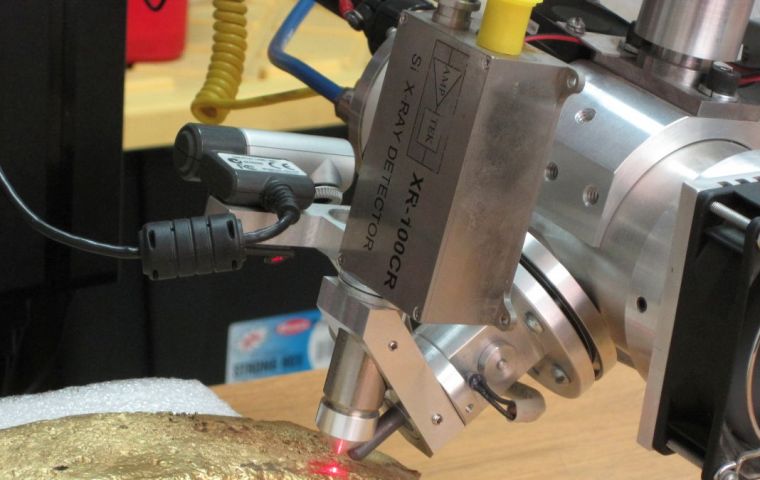MercoPress. South Atlantic News Agency
Gold bar, evidence of Spanish plundering of Aztec empire 500 years ago
 The bar was originally discovered in 1981 during a construction project in Mexico City, which was built on the ruins of the Aztec capital Tenochtitlan
The bar was originally discovered in 1981 during a construction project in Mexico City, which was built on the ruins of the Aztec capital Tenochtitlan A new scientific analysis of a large gold bar found decades ago in downtown Mexico City reveals it was part of the plunder Spanish conquerors tried to carry away as they fled the Aztec capital after native warriors forced a hasty retreat.
Mexico's National Institute of Anthropology and History (INAH) announced the findings of new tests of the bar in a statement on Thursday, a few months before the 500-year anniversary of the battle that forced Hernan Cortes and his soldiers to temporarily flee the city on Jun 30, 1520.
A day earlier, Aztec Emperor Moctezuma was killed, or possibly assassinated, according to the native informants of one Spanish chronicler, which promoted a frenzied battle that forced Cortes, his fellow Spaniards as well as their native allies to flee for their lives.
A year later, Cortes would return and lay siege to the city, which was already weakened with supply lines cut and diseases introduced by the Spanish invaders taking a toll.
The bar was originally discovered in 1981 during a construction project some 5m underground in downtown Mexico City - which was built on the ruins of the Aztec capital Tenochtitlan - where a canal that would have been used by the fleeing Spaniards was once located.
The bar weighs about 2 kg and is 26.2 cm long, 5.4 cm wide and 1.4 cm thick.
A fluorescent X-ray chemical analysis was able to pinpoint its creation to between 1519-1520, according to INAH, which coincides with the time Cortes ordered gold objects stolen from an Aztec treasury to be melted down into bars for easier transport to Europe.
Historical accounts describe Cortes and his men as heavily weighed down by the gold they hoped to take with them as they fled the imperial capital during what is known today as the “Sad Night,” or “Noche Triste,” in Spanish.
“The golden bar is a unique historical testimony to a transcendent moment in world history,” said archaeologist Leonardo Lopez Lujan, who leads excavations at a nearby dig where the Aztecs' holiest shrine once stood.




Top Comments
Disclaimer & comment rulesCommenting for this story is now closed.
If you have a Facebook account, become a fan and comment on our Facebook Page!